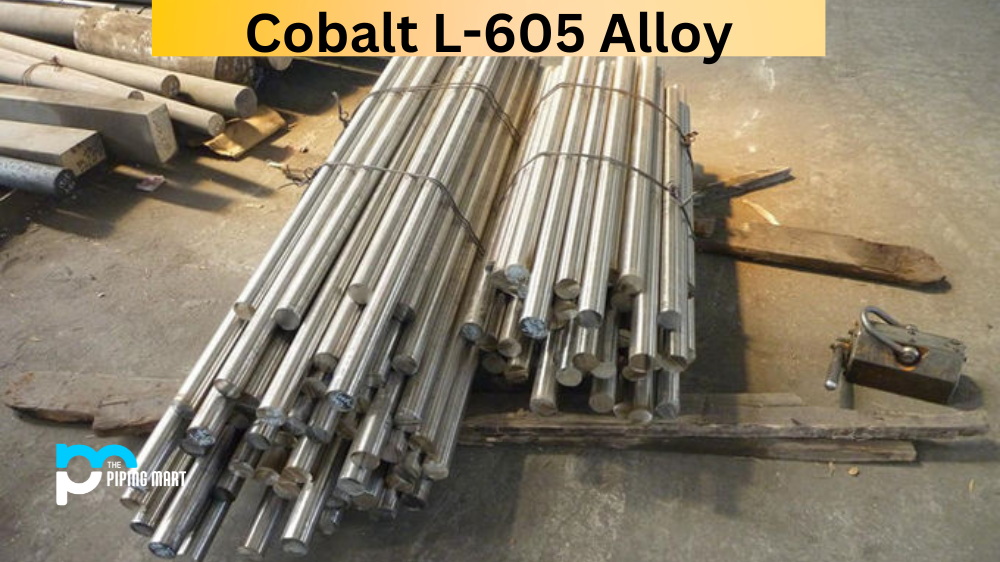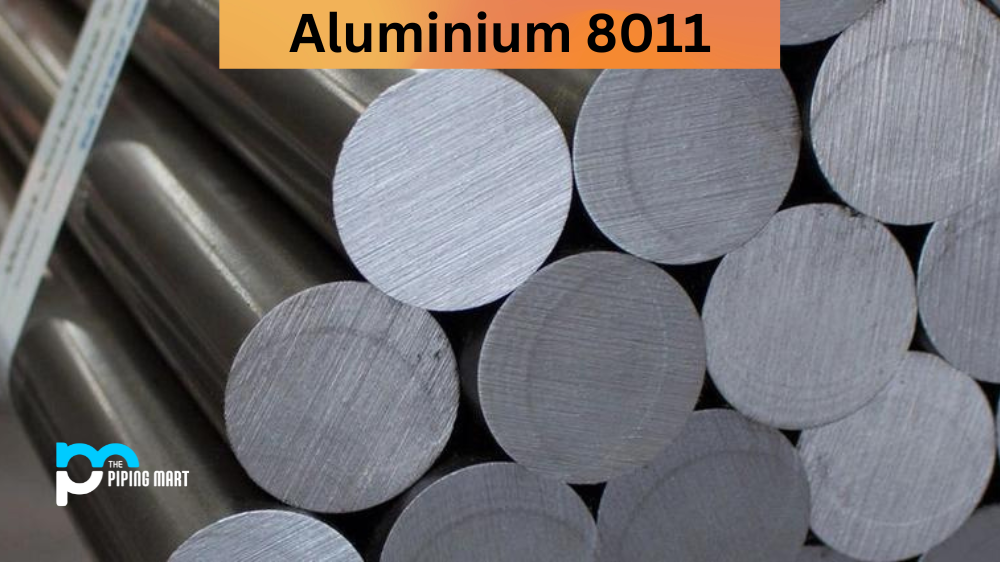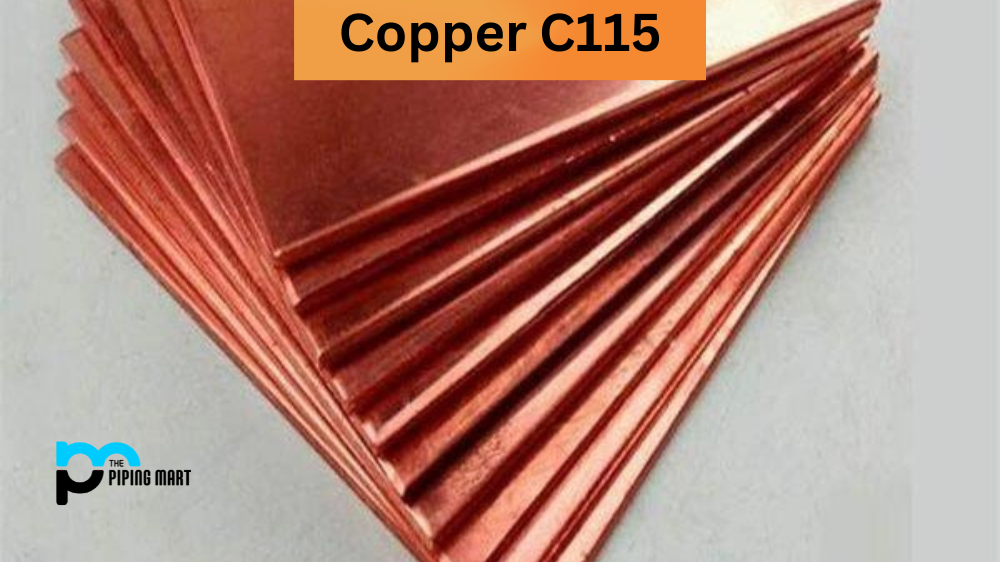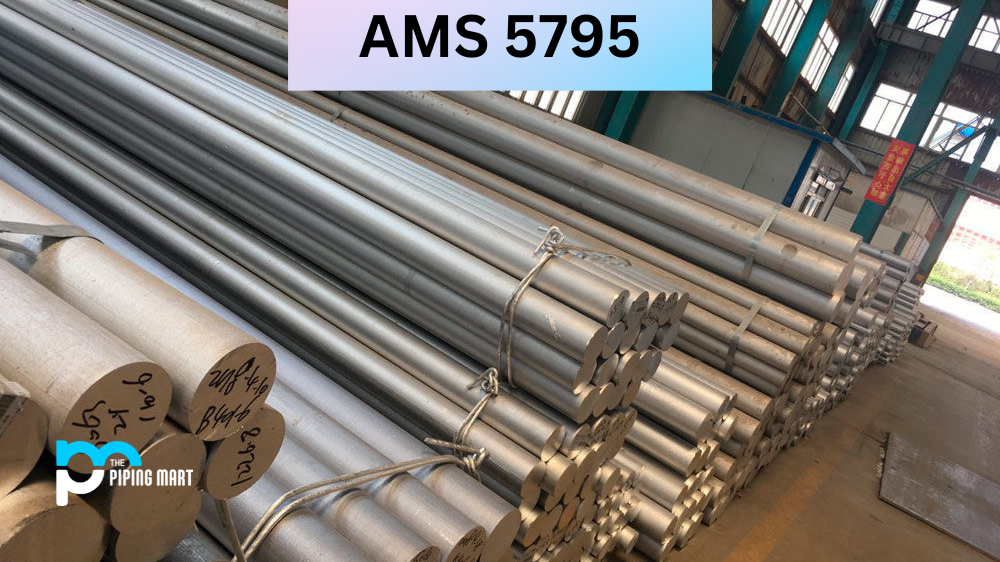Cobalt L-605 alloy, also known as Haynes 25, is a superalloy known for its exceptional strength, durability, and resistance to extreme temperatures and corrosion. The alloy was used in the 1950s and quickly became a sought-after material for high-performance aerospace and power generation applications. This blog explores the composition, physical and mechanical properties, uses, hardness, heat treatment, welding, and corrosion resistance of Cobalt L-605 Alloy.
L-605 Alloy Composition
Cobalt L-605 is a non-magnetic, nickel-base superalloy that contains a combination of various elements such as cobalt (50%), chromium (20-22%), tungsten (15-17%), nickel (10%), iron (3-10%), and manganese (<1%). The alloy is known for its excellent high-temperature strength, resistance to wear and other mechanical stresses in hot, hostile environments.
| Co | Rest |
| Cr | 19,00 – 21,00 |
| W | 14,00 – 16,00 |
| Ni | 9,00 – 11,00 |
| Fe | max. 3,00 |
| Mn | 1,00 – 1,20 |
| Si | max. 0,40 |
| C | 0,05 – 0,15 |
| P | max. 0,04 |
| S | max. 0,03 |
L-605 Alloy Physical Properties
Cobalt L-605 has a 9.17 g/cm³ density and exhibits excellent high-temperature strength and oxidation resistance up to 982°C. On exposure to elevated temperatures, Cobalt L-605 forms a stable oxide layer that protects it from further oxidation, making it suitable for gas turbine engines, rocket nozzles, and chemical processing plants. Cobalt L-605’s high-temperature performance is further enhanced by its high thermal stability and low thermal expansion coefficient.
| Density | 9,27 g/cm³ |
| Melting point | 1330 – 1410 °C |
| Thermal conductivity | 9,4 W/m · °C |
| Coefficient of expansion at 21 – 93°C |
13 μm/m · °C |
L-605 Alloy Mechanical Properties
The mechanical properties of Cobalt L-605 alloy are impressive. It exhibits high yield strength (550-670 MPa), ultimate tensile strength (760-900 MPa), and yield elongation (20-35%). Cobalt L-605 has a high coefficient of thermal expansion of 13.9 µm/m/°C and has a Poisson ratio of 0.31. It also demonstrates excellent fatigue resistance, enabling it to withstand repeated stresses and strains that would fracture weaker alloys.
| Yield strength | min. 460 MPa |
| Tensile strength | min. 1000 MPa |
| Elongation | min. 50% |
L-605 Alloy Uses
Cobalt L-605 alloy has applications in various industries, including gas turbine engines, critical aero-engine components, gas turbine combustors, land-based industrial gas turbines, nuclear power systems, and chemical process equipment. The alloy’s excellent high-temperature corrosion resistance makes it a top choice for applications in highly corrosive environments and extreme temperature ranges.
L-605 Alloy Hardness
The Haynes 25 alloy is known for its high hardness, contributing to its excellent high-temperature performance and corrosion resistance. The alloy has a Rockwell hardness of C40 with excellent machinability, making it easier to produce intricate and complex parts required for industrial applications.
L-605 Alloy Heat treatment
Cobalt L-605 alloy can be heated at temperatures ranging from 1095°C to 1120°C for about 1 hour per inch of thickness, then cooled in air or oil. This heat treatment process helps relieve stress and anneal the alloy, maintaining its mechanical properties and helping eliminate internal stresses.
L-605 Alloy Welding
Welding Cobalt L-605 alloy requires careful consideration due to its low carbon content and susceptibility to hot cracking. However, this material can be welded using gas tungsten arc welding, shielded metal arc welding, and gas-metal arc welding techniques. Like other welding processes, post-weld heat treatments may be required to ensure the welded material maintains its mechanical properties.
L-605 Alloy Corrosion Resistant
One of the most significant advantages of Cobalt L-605 alloy is its exceptional corrosion-resistant properties. The alloy’s chromium content forms a protective oxide layer, which helps prevent further oxidation, and its nickel content provides excellent resistance to corrosion and pitting in corrosive environments. Cobalt L-605 alloy is resistant to a wide range of acids. It has exceptional resistance to intergranular corrosion, making it ideal for use in environments exposed to corrosive and high-temperature conditions.
Conclusion:
In summary, Cobalt L-605 alloy is an impressive superalloy known for its excellent high-temperature strength, durability, and resistance to extreme temperatures and corrosion. Its unique composition provides mechanical properties ideal for high-performance applications in various industries. High temperature, hardness, and corrosion resistance make it a perfect material for use in harsh environments requiring a robust and reliable material. When it comes to Cobalt L-605 alloy, it’s clear that it’s an invaluable material for a plethora of industries.

Abhishek is a seasoned blogger and industry expert, sharing his insights and knowledge on various topics. With his research, Abhishek offers valuable insights and tips for professionals and enthusiasts. Follow him for expert advice on the latest trends and developments in the metal industry.




